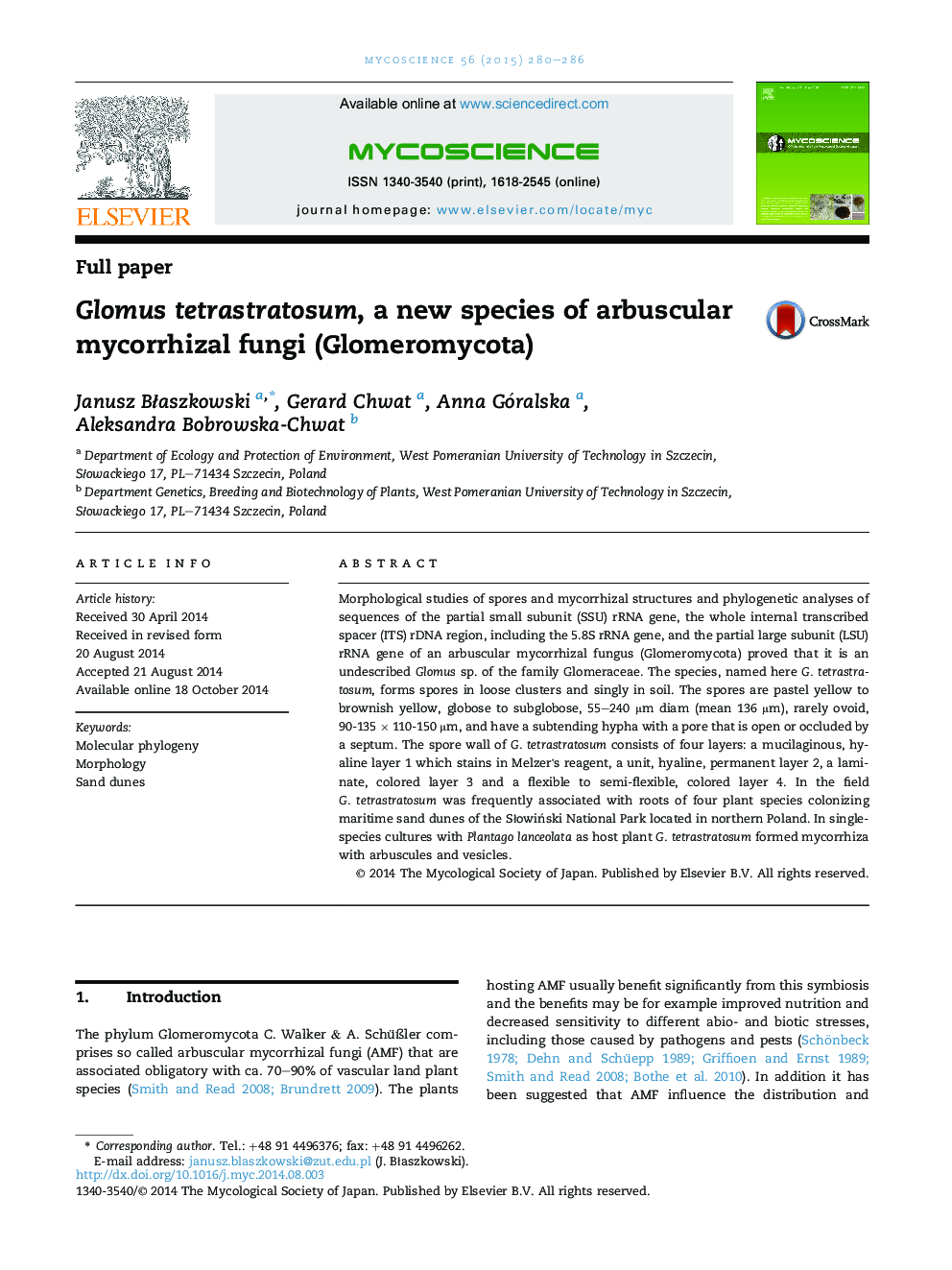| Article ID | Journal | Published Year | Pages | File Type |
|---|---|---|---|---|
| 2060164 | Mycoscience | 2015 | 7 Pages |
•The genus Glomus (Glomeromycota) was so far represented by G. macrocarpum only.•We described here G. tetrastratosum, sp. nov.•The fungus was frequently associated with maritime dune plant species of Poland.•Glomus tetrastratosum is likely widely distributed in the world.
Morphological studies of spores and mycorrhizal structures and phylogenetic analyses of sequences of the partial small subunit (SSU) rRNA gene, the whole internal transcribed spacer (ITS) rDNA region, including the 5.8S rRNA gene, and the partial large subunit (LSU) rRNA gene of an arbuscular mycorrhizal fungus (Glomeromycota) proved that it is an undescribed Glomus sp. of the family Glomeraceae. The species, named here G. tetrastratosum, forms spores in loose clusters and singly in soil. The spores are pastel yellow to brownish yellow, globose to subglobose, 55–240 μm diam (mean 136 μm), rarely ovoid, 90-135 × 110-150 μm, and have a subtending hypha with a pore that is open or occluded by a septum. The spore wall of G. tetrastratosum consists of four layers: a mucilaginous, hyaline layer 1 which stains in Melzer's reagent, a unit, hyaline, permanent layer 2, a laminate, colored layer 3 and a flexible to semi-flexible, colored layer 4. In the field G. tetrastratosum was frequently associated with roots of four plant species colonizing maritime sand dunes of the Słowiński National Park located in northern Poland. In single-species cultures with Plantago lanceolata as host plant G. tetrastratosum formed mycorrhiza with arbuscules and vesicles.
